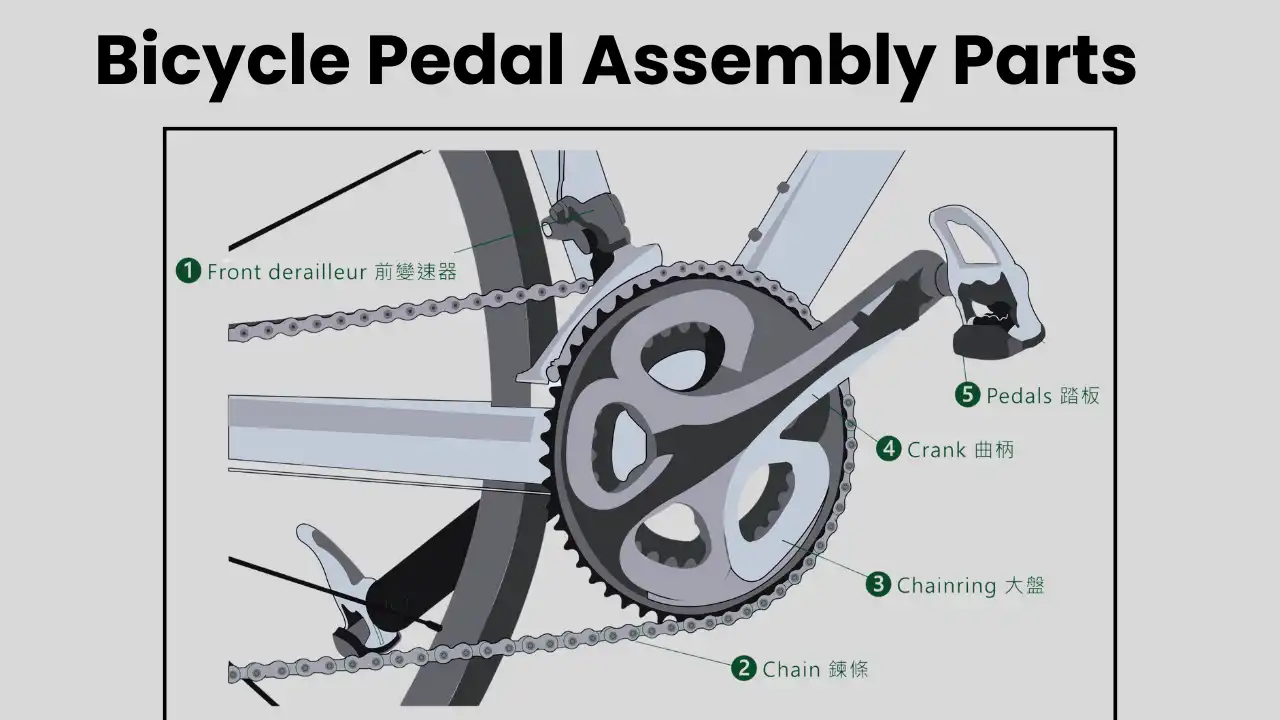An important component of any bicycle is the pedal, which connects the rider’s foot to the drivetrain. Maintenance, repair, and customization of a bicycle pedal assembly require an understanding of the different parts. In the following guide, you will find information about the parts, names, diagrams, and considerations for both new and used pedal assemblies.
An introduction to bicycle pedal assembly parts
The pedal assembly of a bicycle consists of several components that work together to provide the rider with excellent power transfer efficiency and comfort. These are some of the key components:
Pedal Body: The pedal body is the main platform on which the footrests rest. In most cases, it is made of aluminum, steel, or composite materials.
Axle: The axle is the spindle that connects the pedal body to the crank arm. It is possible to manufacture axles from steel or titanium, with sealed bearings that are designed to reduce friction.
Bearings: Located within the pedal body or on the axle, bearings contribute to the smooth rotation of the pedal. There is a high demand for sealed bearings due to their durability and ease of maintenance.
Cleats: When used with clipless pedaling systems, cleats are attached to the bottom of cycling shoes to improve power transfer to the pedals.
Pins/Grips: A common feature of mountain bike pedals, pins and grips prevent slippage during off-road activities and provide traction for the rider’s shoes.

Names and functions of bicycle pedal parts
When troubleshooting and maintaining bicycle pedals, you must know the names and functions of the pedal parts:
- Padel Body: The pedal body provides a stable platform for the foot and distributes pressure evenly. Grip and comfort are affected by its shape and material.
- Axle: Transfers the rider’s pedaling force from the pedal to the crank arm. Axles must withstand high loads and rotational forces.
- Bearings: Reduce friction between moving parts, ensuring smooth pedal rotation. Sealed bearings are ideal for durability and weather resistance.
- Cleats: Attach to cycling shoes and engage with clipless pedals, allowing riders to pedal more efficiently by pulling up and pushing down.
- Pins/Grips: Improve grip and traction, especially in wet or muddy conditions. Mountain bike pedals prevent foot slippage.
Bicycle Pedal Parts Diagram
- Pedal Body
- Axle
- Bearings
- Cleats (for clipless pedals)
- Pins/Grips
Used Bicycle Pedal Assembly Parts
You should inspect each part of a used pedal assembly for wear and damage before buying it:
The pedal body should be examined for cracks, bent surfaces, or excessive wear. Make sure that the axle threads are intact. The axle should be inspected for signs of bending or corrosion. In order to determine if the bearings are in good condition, rotate the axle to determine whether it is smooth. It is also important to ensure that the bearings are in good condition by spinning the pedal. The presence of excessive noise, rough rotation, or play indicates worn or damaged bearings.
In addition, inspect the cleats for excessive wear or damage, especially at the engagement points. Make sure the bolts are in good condition and the shoes are compatible with the bolts. The pins and grips should be present and securely fastened. Replace any missing or damaged pins to maintain traction.
Shimano Bicycle Pedal Assembly Parts
Shimano is a leading bicycle component manufacturer. Common parts found in Shimano pedal assemblies include:
- Pedal Body (e.g., Shimano XT, XTR)
- Axles (usually made of steel or titanium)
- Sealed bearings (for smooth rotation).
- Cleats (compatible with the Shimano SPD system)
- Adjustable pins (for grip on mountain bike pedals)
Bike Pedal Axle
The pedal axle is a critical component that connects the bicycle body to the crank arm. Considerations for pedal axles include:
- Material: Steel axles are durable and cost-effective, while titanium axles offer weight savings.
- Length: Axle length varies depending on bike type and rider preferences.
- Thread: Axle threading must match crank arm threading to ensure compatibility.
- Bearings: Sealed bearings around the axle reduce friction and require minimal maintenance.
As a result, it is crucial to understand the components of a bicycle pedal assembly in order to maintain, repair, and customize it. In order to ensure optimal performance and safety, it is essential to conduct a thorough inspection and install the pedal assemblies properly, regardless of whether they are purchased new or used.

